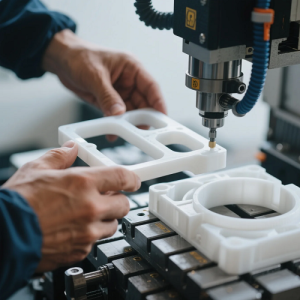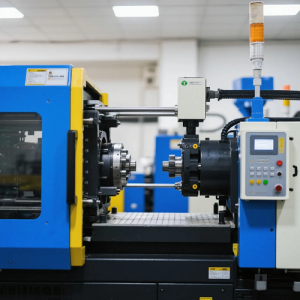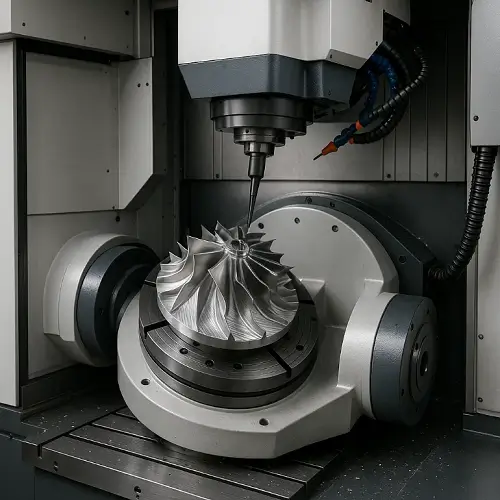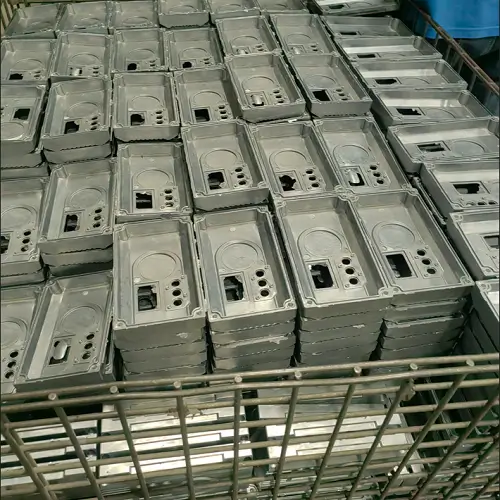When bringing a product to market, timing, cost, and technical accuracy all matter. That’s why low-volume manufacturing has become essential for hardware startups, design engineers, and R&D teams looking to validate ideas without committing to full-scale production.
Two of the most widely used methods for low-volume production are CNC machining and injection molding. Both can deliver quality parts on tight schedules, but they serve different purposes—and choosing the wrong one at the wrong time can result in wasted time and money.
So, how do you decide which one fits your project? Let’s break it down.

Understanding Low-Volume CNC Machining
CNC (Computer Numerical Control) machining is a subtractive manufacturing process in which material is removed from a solid block using high-speed cutting tools, based on a digital design. For low-volume production, this process offers precision, speed, and flexibility without the need for expensive tooling.
At JeekRapid, we regularly support CNC projects ranging from a single prototype to several hundred units. We work with metals like aluminum and stainless steel, as well as engineering plastics such as POM, PC, and Nylon. With tolerance capability down to ±0.02mm, it’s a reliable choice when mechanical performance or dimensional accuracy is a must.
Understanding Low-Volume Injection Molding
Injection molding is a high-efficiency process used to produce plastic parts by injecting molten material into a custom mold cavity. For low-volume scenarios, the mold is often made from aluminum or soft steel to keep costs down and turnaround relatively quick.
Low-volume molding becomes attractive when your design is finalized and you need to produce anywhere from 100 to 5,000 units. It offers a level of consistency, surface finish, and per-unit cost efficiency that CNC machining can’t match at scale—assuming you’re ready to invest in tooling.
When CNC Wins—and When Molding Does
If your part is still evolving, you’re testing multiple variants, or working with metals, CNC machining is typically the smarter path. There’s no tooling required, revisions are easy, and parts can be produced in just a few days.
Molding becomes more advantageous once your design is stable and you’re focused on replicability and aesthetics. While upfront tooling costs and lead times are higher, injection molding shines when it comes to scalability and unit cost reduction over longer runs.

Engineering-Focused Comparison: Tolerance, Performance, Investment, and Scalability
For teams evaluating low-volume manufacturing options, going beyond surface-level comparisons is essential. Here’s how these two methods compare from an engineering perspective:
Dimensional Tolerances
CNC machining easily achieves tolerances in the range of ±0.02–0.05mm, making it suitable for mechanical assemblies, housings with tight fits, and parts that need structural alignment. Injection molding typically offers tolerances in the ±0.1–0.3mm range—acceptable for most enclosures and consumer-facing parts, but not ideal for precision fits.
Material Compatibility and Strength
CNC machining supports a wide range of materials, including metals like aluminum, stainless steel, brass, and even titanium. This makes it ideal for parts that need strength, thermal resistance, or wear performance. Injection molding is generally limited to thermoplastics—ABS, PC, TPE, PA—though filled variants can improve performance, they rarely match machined metal.
Cost Structure and Flexibility
CNC machining requires little to no upfront investment. You can submit your CAD files and get parts back in a few days. It’s ideal for prototyping and quick-turn projects. In contrast, injection molding requires custom tooling, which may take 2–4 weeks to fabricate and cost several thousand dollars. Once built, though, it enables much lower per-unit costs, especially at higher volumes.

Design Iteration and Speed
CNC is far more forgiving when your design isn’t final. Need to change a hole position? Update the CAD and re-machine. With molding, even a small change to wall thickness or draft angles may require tool rework or a new insert—delaying production and increasing cost.
Production Scale and Unit Economics
At quantities under 100, CNC generally remains more economical. Once you hit the 300–500 unit mark, injection molding starts to pay off due to its lower cost per part. For thousands of units, molding is the clear winner—provided your design is fully locked in.
Geometry and Surface Finish
Injection molding supports more complex part geometries, including undercuts, internal channels, and living hinges—thanks to advanced mold design (sliders, lifters, inserts). Surface finishes can range from matte to high-gloss or textured, per SPI standards. CNC machined parts typically have visible tool paths unless post-processed with bead blasting, polishing, or anodizing.
Real-World Example: When Each Method Wins
Case 1: Precision Medical Device Housing
A startup needed 30 aluminum cases for a wearable ECG prototype. With dimensional accuracy of ±0.05mm and frequent design changes expected, CNC machining was the only logical choice. We delivered the first batch in 4 days, allowing the team to complete testing and make two design iterations before launch.
Case 2: Consumer Product Demo Units
A client preparing to launch a kitchen smart device needed 1,000 plastic enclosures with cosmetic-grade surfaces and snap-fit features. The design was locked, and cost per unit was critical. We helped them develop a rapid aluminum mold and delivered production-grade parts in three weeks—at less than 20% of CNC’s per-piece cost.
When to Combine Both Approaches
Many successful projects begin with CNC machining for functional prototypes and switch to injection molding once the design is finalized and demand grows. This hybrid approach lets you balance speed, feedback, and cost control throughout development.
At JeekRapid, we often support this transition by providing CNC for design iterations and molding for pilot runs or pre-launch batches. We also offer bridge tooling solutions—like MUD (Master Unit Die) inserts—to lower upfront costs and accelerate molding cycles.
Final Thoughts: Strategy First, Manufacturing Second
Don’t choose a process based solely on cost or habit. Think about where your product is in its lifecycle:
-
Are you still iterating design?
-
Do you need just a few functional prototypes or hundreds of customer-ready units?
-
Is material performance more critical than appearance?
-
How fast do you need parts in hand?
Your answers will guide your decision.
If you’re unsure, we’re here to help. Upload your CAD files and requirements, and our engineers will recommend the most efficient, cost-effective path for your stage.
Contact us today for a detailed quote or free DFM review.
More recommendations
Many projects begin with small-scale builds, but the first step is usually CNC prototyping to validate designs before moving into low-volume runs.


